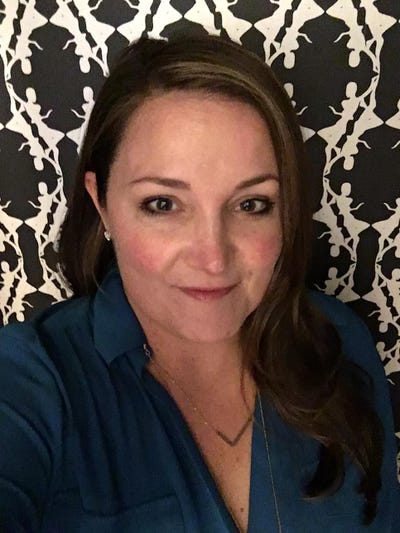Eliminating Forever Chemicals and Clean Water Access in Orange County, Calif.
What if it were possible to eliminate 99.9% of PFAS — “forever chemicals” — from our water, food waste and landfills? That’s what 374Water, a cleantech social impact company is hoping to do, through the company’s patented AirSCWO™ technology.
What if it were possible to eliminate 99.9% of PFAS — “forever chemicals” — from our water, food waste and landfills? That’s what 374Water, a cleantech social impact company is hoping to do, through the company’s patented AirSCWO™ technology.
347Water recently announced that the Orange County Sanitation District of California (OC San) became its first municipal client; the County plans to use the AIRSCWO system at commercial scale to treat raw primary and secondary sludge, biosolids, and food waste. We recently chatted with Kobe Nagar, 374Water CEO and co-founder, about, and more.
Waste360: Explain the problem with the "forever chemicals." Why are they there, and what damage can they do?
Nagar: “Forever chemical” is an expression used to describe per - and polyfluoroalkyl substances (PFAS) and other organic compounds such as microplastics and pharmaceuticals. These chemicals do not readily degrade and are persistent in the environment. PFAS is particularly troublesome because of the strong carbon-organofluorine bond that makes up the compound. PFAS were widely used chemicals for many consumer goods for more than 70 years. They are showing up in food and drinking water across the US and have been detected in the blood of an estimated 98% of Americans. Exposure to PFAS can cause thyroid cancer, liver and kidney damage, and reduced fertility and birth weight, as well as other conditions.
Waste360: We know they are prevalent, but what kinds of waste are they in? Which types of waste are affected the most?
Nagar: Forever chemicals are prevalent in waste streams generated during the manufacturing of organic compounds including PFAS, pharmaceuticals, specialty chemicals, petroleum products, pesticides, and agricultural chemicals. The chemicals enter the environment via gaseous emissions, industrial wastewater discharges, land disposal, and manufacturing facility and waste treatment, storage, and disposal facility run-off.
PFAS have been used in non-stick cookware, water-repellent clothing, stain resistant fabrics and carpets, some cosmetics, some firefighting foams, and products that resist grease, water, and oil. Use of these products has led to PFAS in municipal wastewater and biosolids. Disposal of these products has led to PFAS-contamination in landfills, landfill leachate, and landfill run-off. Use of aqueous film-forming foam in firefighting has resulted in contaminated soils, debris, and storm-water runoff. As we begin to clean up PFAS contamination, we are generating spent filters, membranes, resins, and granular carbon from remediation systems.
Waste360: Please explain how the AirSCWO system works.
Nagar: AirSCWO technology uses supercritical water oxidation (SCWO) to transform the simplest and most complex wastes like PFAS and other forever chemicals to valuable recoverable resources. SCWO is a physical-thermal process powered by water above its critical point (374°C and 221 bar). In these conditions, in the presence of oxygen, organics are rapidly converted to clean water, energy, and minerals with >99.9 percent destruction of all organic compounds. We believe that our AirSCWO technology will significantly alter how we manage the waste our society generates. It is a disruptive technology that will move us from conventional waste treatment and disposal to innovative waste elimination and resource recovery.
Waste360: Are there any downsides to AirSCWO?
Nagar: SCWO systems have been around for a few decades but have not had widespread commercial success because of shortcomings in the design of earlier generations of the technology. When we were working with the US EPA PFAS Innovative Treatment Team (PITT) on the demonstration of PFAS elimination using AirSCWO, the EPA coined our technology “the third generation of SCWO.” Our novel approach to SCWO uses air as the oxidant, which is much safer and more affordable than pure oxygen and chemical oxidants. The way in which we preheat, mix, and feed the waste and air into the reactor is unique and rapidly brings the feedstock to supercritical conditions thereby minimizing risks of corrosion, charring, and plugging, the three main shortcomings of earlier versions of SCWO. All organics are completely mineralized, while the heat of oxidation is recovered to heat the feedstock and air. AirSCWO is also a continuous 24x7 flow system designed to treat sludges and slurries in addition to aqueous wastes.
Waste360: What's the size and cost of the system, and how long does it take to work?
Nagar: 374Water offers a six-wet-ton per day system. This is the unit that OC San purchased for our joint project at their Fountain Valley, CA facility. We will offer a 30 wet ton per day system later this year. After that we are considering a 200-wet-ton per day system for release in 2024-25. Prices vary by system size, and 374Water offers purchase, lease, and “as a service” options to enable clients and partners to acquire units in a manner that suits their financial needs.
Waste360: What do 374Water and OC San hope to achieve with the recent partnership?
Nagar: OC San is an innovative, forward-looking utility and government agency whose mission is to protect public health and the environment. They are well-respected leaders in the wastewater industry. OC San believes our technology presents an opportunity to convert all complex organic material including plastics, PFAS, and other Contaminants of Environmental Concern (CECs). The AirSCWO project is another example of OC San’s long history of researching new and innovative technologies to improve wastewater treatment and resource recovery. It continues their tradition of innovation by using the newest and most up to date science and technology. The overall solution includes a sludge pretreatment unit that will dewater and thicken sludge prior to AirSCWO treatment. 374Water and our partners, the Merrell Bros. and Hazen and Sawyer, will design, install, commission, operate, and maintain the system for six months, and then transfer operations to OC San.
Waste360: Are any other local/regional governments considering this? Is the public sector your customer target right now?
Nagar: We are engaged with many US, UK, and European municipal utilities, private and public industrial companies, and the US Department of Defense. All are considering use of AirSCWO as a decentralized treatment at the source of generation to reduce off-site waste hauling and disposal cost, transform waste to reusable water, energy, and minerals and eliminate forever chemicals so they do not enter, or reenter, the environment.
Waste360: What about professionals who handle septic, portable sanitation, etc.—could they benefit from AirSCWO?
Nagar: AirSCWO could be deployed at large festivals and events, in mixed-use residential and commercial developments, and in rural communities without access to centralized wastewater treatment.
Waste360: How widespread do you see this becoming?
Nagar: Our vision is a world with no waste, and we are relentlessly pursuing it. Global waste generation is increasing due to surges in population and globalization. Land for waste application and disposal is becoming scarce, while the cost of hauling waste offsite is dependent on volatile petroleum pricing, and powerful greenhouse gas emissions such as methane are being released from conventional “dirty” technology. Society has no choice but to accept the paradigm shift we are driving forward.
Waste360: Does the system work differently with wastewater as opposed to solid waste?
Nagar: The system uses an omniprocessor, which can handle a variety of wastes. Feedstocks must be pumpable, so aqueous liquids and slurries without debris and grit are best suited for AirSCWO.
Waste360: As it is Women's History Month, can you talk about women's contribution to the development of this system and the implementation?
Nagar: Diversity, gender equality, and inclusion are embraced here at 374Water and for that reason we recognize strong female leaders that are bringing our technology to the forefront of innovation. Dr. Tali Harif, for example, is our Director of Business Development for Europe & UK. With over 20 years of experience in clean water, she is leading the commercialization and adoption of our AirSCWO systems throughout Europe. We believe that diversity drives innovation, and we see it as a must-have at our company. We apply those principles throughout our company including in our recruitment process, equal pay policies based on one's experience, and fair parental leave options to promote a good work-life balance. We embrace strong women like Dr. Tali Harif in our innovation and encourage women to please apply for our open roles at 374Water.
Waste360: Anything else you want to share?
Nagar: We recently announced the launch of our first subsidiary located in Israel. The formation of the subsidiary follows the Binational Industrial Research and Development (BIRD) Foundation's selection of 374Water to receive a $900,000 grant for a cleantech project with Environmental Services Company, Ltd. in Israel. It may not be well known, but each year more than five million tons of municipal and commercial waste are generated in Israel, a country with limited land and a growing population. Through our subsidiary, 374Water will provide its AirSCWO technology to meet the increasing demand for sustainable, resilient, and decentralized waste management solutions.
About the Author
You May Also Like




.png?width=300&auto=webp&quality=80&disable=upscale)